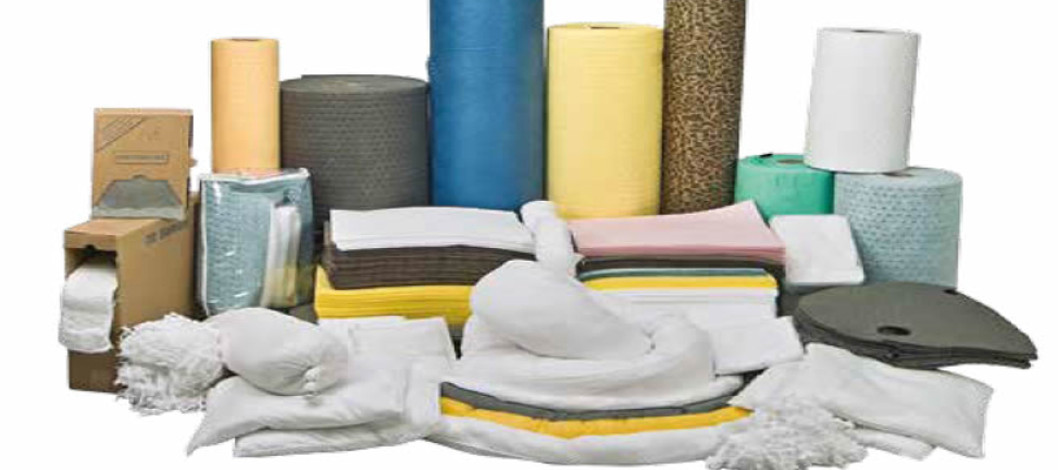
File Photo
The future of nonwoven products is poised for significant growth and innovation, driven by technological advancements, sustainability demands, and expanding applications across industries. Below is a comprehensive outlook based on current trends and projections:
1. Market Growth and Economic Trends
*Global Market Expansion: The global nonwoven fabrics market is projected to grow substantially. Estimates suggest the market, valued at approximately USD 58.2 billion in 2024, could reach USD 104.5 billion by 2033, with a compound annual growth rate (CAGR) of 6.7%. This growth is fueled by increasing demand in emerging markets, particularly in Asia-Pacific (e.g., China and India), where rapid industrialization, population growth, and rising hygiene awareness drive consumption.
*Regional Dynamics: Asia-Pacific is the largest consumer of nonwovens, accounting for a significant market share due to its manufacturing base and growing middle class. Latin America is expected to see the highest regional CAGR (2.7% from 2024 to 2034), driven by infrastructure and hygiene product demand.
*Disposable vs. Durable Nonwovens: Disposable nonwovens (e.g., diapers, wipes, medical products) dominate volume consumption, but durable nonwovens (e.g., filters, automotive components) hold a larger market share (nearly 60% from 2024–2029) due to their higher value and extended use. Disposable products are growing slightly faster in regions like Central Asia, where demand for high-performance consumer goods is rising.
2. Sustainability and Eco-Friendly Innovations
*Biodegradable and Recycled Materials: Growing environmental concerns and regulatory pressures (e.g., the EU’s ban on single-use plastics) are pushing the industry toward biodegradable and recyclable nonwovens. Companies like Berry Global and Freudenberg are launching products like biodegradable diapers and recyclable fabrics. For example, KINGFA’s biodegradable nonwovens, made from polylactic acid (PLA) and PBAT, achieve a 95% degradation rate in 90 days.
*Circular Economy: The industry is adopting circular economy principles, focusing on reusable nonwovens and recycling systems to reduce waste. Innovations include bio-based fibers (e.g., viscose, PLA from corn starch) and energy-efficient production processes. Suominen Corporation reports that 62% of its production uses renewable fibers.
*Consumer and Regulatory Drivers: Increasing consumer demand for eco-friendly products, coupled with government policies promoting sustainable materials, is accelerating the shift. For instance, nonwovens are replacing single-use plastics in hygiene and packaging applications.
3. Technological Advancements
*Advanced Manufacturing Processes: Innovations in spunbond, meltblown, and hydroentanglement technologies are enhancing nonwoven performance. For example, Reifenhäuser Reicofil’s Reicofil 5 lines improve output (up to 1200 m/min) and reduce energy consumption. Nanofiber integration and multi-layer composites are enabling stronger, more functional fabrics.
*Smart Nonwovens: The integration of sensor technology and smart textiles is creating nonwovens with embedded functionalities, such as health monitoring in medical applications or environmental sensing. These are expected to open new markets in the healthcare and industrial sectors.
*Automation and Efficiency: Automation in production, such as high-speed diaper manufacturing (over 1,000 units per minute), reduces costs and enhances scalability. Technologies like Oerlikon’s airlaid and DiloGroup’s 3D-Lofter enable precise, sustainable production.
4. Key Application Areas
*Hygiene and Medical: The largest segment, driven by demand for diapers, sanitary products, and medical supplies (e.g., surgical gowns, masks). The COVID-19 pandemic significantly boosted this sector, with nonwovens used in face masks and PPE. Spunbond fabrics are favored for their softness and absorbency in hygiene products.
*Automotive: Nonwovens are increasingly used in lightweight components, battery separators for electric vehicles, and thermal insulation, driven by the shift to sustainable vehicles.
*Geotextiles and Construction: Infrastructure development in countries like India and China is increasing demand for nonwovens in geotextiles, roofing, and erosion control.
*Filtration and Industrial: Nonwovens are critical in air, gas, and liquid filtration systems, with advancements improving efficiency and durability.
*Agriculture and Packaging: Nonwovens are used as crop covers and sustainable packaging materials, benefiting from their biodegradability.
5. Challenges and Opportunities
Challenges:
*Environmental Impact: Disposable nonwovens contribute to waste, necessitating better recycling and biodegradable solutions.
*Cost and Competition: High initial investment in sustainable technologies and intense market competition require strategic innovation.
*Complex Blends: Developing circular solutions for non-polyester/cotton blends (e.g., polyamide-polypropylene) remains a challenge.
Opportunities:
*Emerging Markets: Rapid growth in Asia-Pacific and Latin America offers untapped potential.
*Innovation Leadership: Companies investing in R&D for high-performance, multifunctional nonwovens (e.g., antimicrobial, flame-retardant) will lead the market.
*Global Alliances: Initiatives like the proposed Global Nonwovens Alliance by INDA and EDANA aim to foster cross-border collaboration and industry standards.
6. Future Directions
*High-Performance Nonwovens: The industry is moving toward fabrics with enhanced properties like moisture transport, breathability, and antimicrobial features, potentially replacing traditional textiles in technical clothing and other applications.
*Green Production: Adoption of clean energy and circular economy methods will reduce the carbon footprint of nonwoven manufacturing.
*Cross-Industry Impact: Innovations in nonwoven fibers could influence woven and knitted fabrics, creating hybrid textiles for next-generation applications.
*Hemp and Natural Fibers: Growing interest in hemp-based nonwovens, as highlighted in recent discussions, points to sustainable alternatives with high durability.
Conclusion
The nonwoven industry is at a transformative juncture, with sustainability, technological innovation, and market expansion shaping its future. By 2030–2034, expect nonwovens to dominate in hygiene, medical, automotive, and geotextile applications, driven by eco-friendly materials and smart technologies. Companies investing in biodegradable solutions, automation, and global market penetration will likely lead the industry. The sector’s ability to adapt to environmental regulations and consumer preferences will be critical to its long-term success.
Source: Online/NAN
Comment Now